In a couple of the articles (article 1, article 2) that I wrote recently, I talked about establishing a home-based meditation practice. For the practice of meditation, the most common recommendation is to sit on the floor in any one of the common meditative postures. Of course, if you are not comfortable sitting on the floor, you can always opt to sit in a chair, on a stool or a thick cushion etc. In this article, I would like to review some of the commonly practiced seated asanas used for both meditation and pranayama.
I hope you will enjoy practicing these asanas with me using the video.
Before going into a discussion of the different postures, let us just reflect on the word “asana” for a moment. The Sanskrit word “asanam – आसनम्” is derived from the root word “aas – आस्” which means to sit or rest in one place. In the classical yoga texts (Hatha Yoga Pradeepika and Gherand Samhita, for example), there are several meditative asanas described. Some of the more commonly practiced asanas are – sukhasana, padmasana, swastikasana, siddhasana, vajrasana, virasana etc. The word asana, in addition to its meaning as the sitting posture, it is also applied to the seat on which one sits. So, if you are sitting on a yoga mat for meditation, then the mat is also called an asana. Likewise, a stool, chair, bench etc where one sits becomes an asana.
In the classical yoga text “Yoga Sutras of Patanjali”, the word asana is applied to sitting postures that are used for meditation. Patanajali defines asana as “sthira-sukham-asanam (स्थिरसुखमासनम्)” (sutra 2.46) which means “a sitting posture is one which is firm/steady and comfortable”. In the science of Hatha Yoga which was developed much later, the meaning of the word asana was extended to include all the physical postures (e.g., sarvangasana (shoulder stand), halasana (plough pose etc) that are used in a Hatha Yoga practice.
In all the poses described below, it is recommended that the spine is kept upright, tall and vertical. Try to keep the head, neck and the trunk in vertical alignment. In the final position, you may make any adjustments that will help you remain steady and comfortable for the duration of your practice. In the cross-legged poses, your intention is to keep the knees as close to the ground as possible. If you are unable to bring the knees to the ground, you may rest your knees on a blanket folded under the knees. If you are using any kind of padding to rest the knees on, you should also sit on a thick cushion so your buttocks are raised either in line with the knees or even slightly higher than the knees. This will provide relief to both the spine and the knees.
Let’s review the commonly practiced meditative asanas.
Sukhasana (Easy Posture)
Sukhasana (सुखासन) is the most common sitting posture that people use for sitting on the floor. In this posture, you sit cross-legged with one ankle crossing over the other ankle and the heels hidden under the opposite thighs. The spine should remain erect and the body maintained still during meditation/pranayama practice. If it is uncomfortable for you to sit on the floor, you may like to sit on a cushion. A cushion provides support both for the knees and the spine. You may also like to rest your back against the wall, keeping the spine straight.
Siddhasana (सिद्धासन) – Adept Pose
- Sit on your mat with the legs stretched out in front.
- Bend the left knee and place the heel of the left foot under the perineum. The sole of the left foot is against the right thigh.
- Bend the right knee and place the right ankle on top of the left ankle. Slide the toes (except the big toe) under the fold of the left knee (between the left thigh and the calf muscles).
- Keep the spine upright, eyes closed and body relaxed during pranayama/meditation
Swastikasana (स्वस्तिकासन) – Auspicious Pose
Swastikasana is a very minor variation on the Siddhasana mentioned above. While in the Siddhasana pose, reach for the right big toe and pull it up. In the final pose, both the big toes are showing above the fold under the opposite knees. The rest of the toes are hidden under the knees.
Ardha-Padmasana (अर्ध पद्मासन) – Half Lotus
- Place the left foot under the opposite thigh
- Place the right foot on top of the left thigh. Try to bring the heel of the right foot as close to the abdomen as possible.
- Keep the spine upright, eyes closed and body relaxed during pranayama/meditation
- Reverse the position of the two feet and practice on the other side
Padmasana (पद्मासन) – Lotus Pose
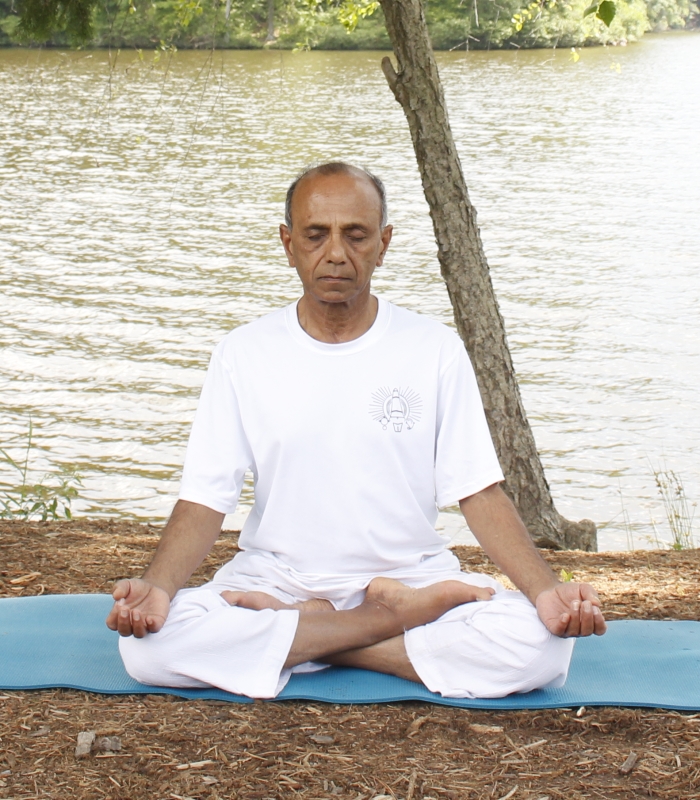
Padmasana (Lotus Pose)
Padmasana is a popular pose and is the one most frequently seen in traditional yoga texts.
- In this pose you place both the feet on top of the opposite thighs, with the heels as close to the abdomen as possible
- There should be no strain in the knees, ankles or thighs while maintaining the pose. If needed, sit on a cushion and place some padding under the knees, as mentioned above.
- Keep the spine upright, eyes closed and body relaxed during pranayama/meditation
Vajrasana (वज्रासन) – Diamond Pose
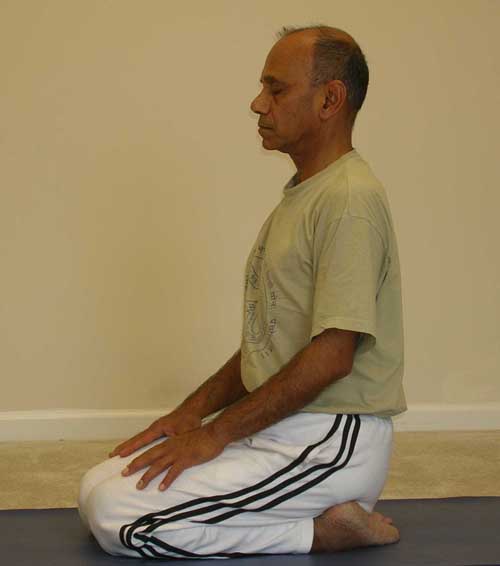
Vajrasana (Diamond Pose)
- Start by kneeling on your mat.
- Try to close the gap between the knees and the feet. Keep the top of the feet on the ground with the soles of the feet pointing up.
- Slowly, sit back on your legs. Allow the buttocks to rest on your heels and the thighs on your calves.
- Make minor adjustments by slightly moving backward, forward and sideways until you are comfortable.
- Try to keep the spine straight and vertical, yet relaxed. You can rest your hands on the thighs, palms facing down.
In my own practice, I prefer to sit in Vajrasana while practicing the Kapalabhati pranayama.
Virasana (वीरासन) – Hero Pose
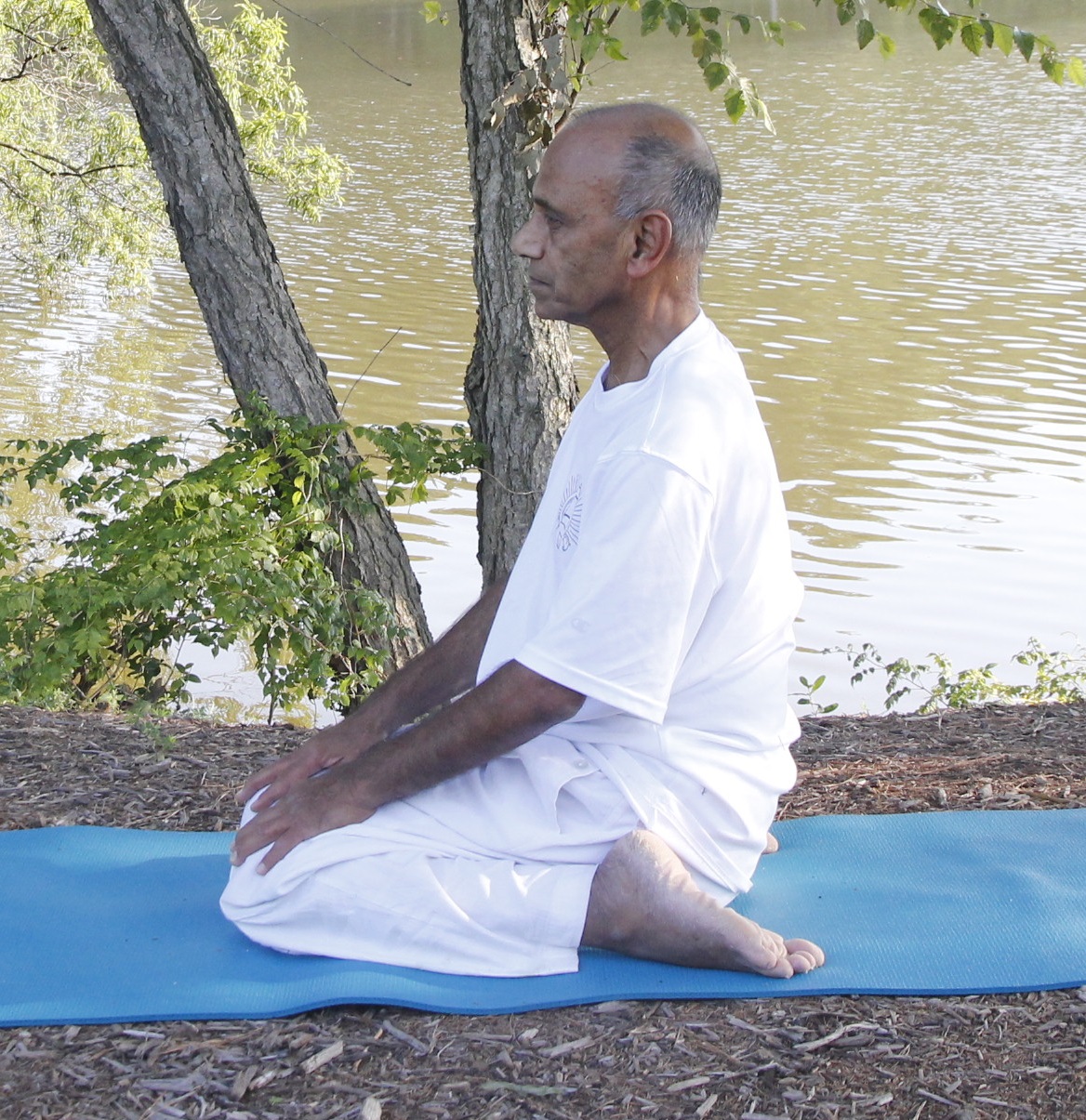
Virasana (Hero Pose)
- Start by kneeling on your mat.
- Try to close the gap between the knees. Slide your feet apart, slightly wider than your hips. Keep the top of the feet flat on the ground with the soles of the feet pointing up.
- Slowly, lower the buttocks down until they are resting on the floor. If you recall, in Vajrasana, the buttocks are resting on the heels whereas in the Virasana, they are on the floor.
- If your buttocks don’t comfortably rest on the floor, raise them on a block or a folded blanket placed between the feet.
- Make minor adjustments by slightly moving backward, forward and sideways until you are comfortable.
- Try to keep the spine straight and vertical, yet relaxed. You can rest your hands on the thighs, palms facing down.
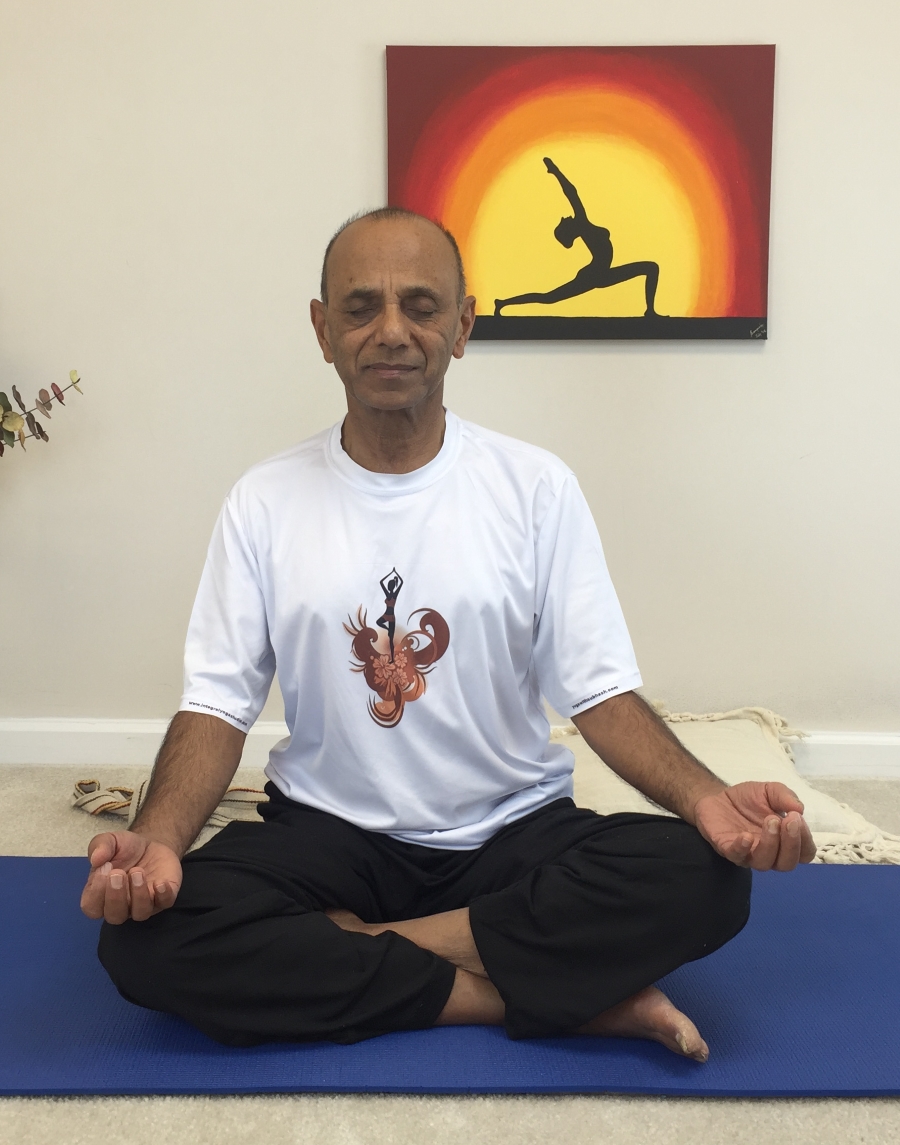
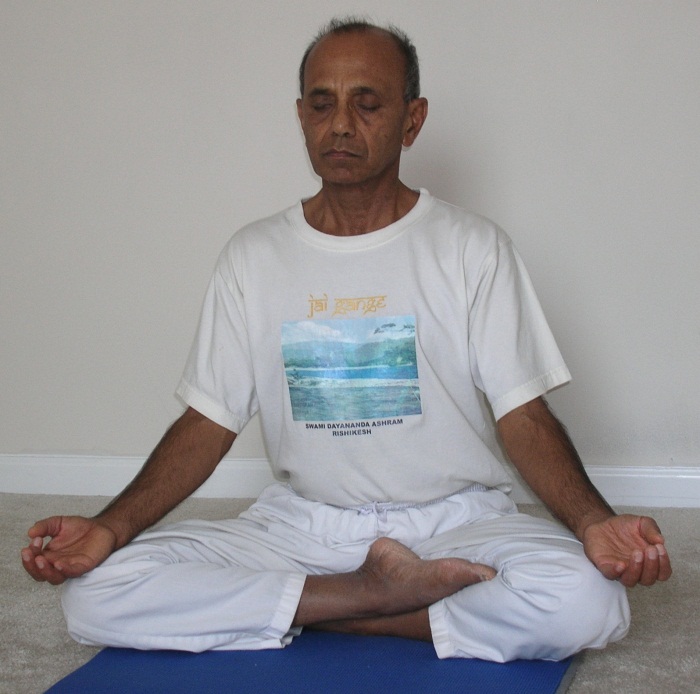
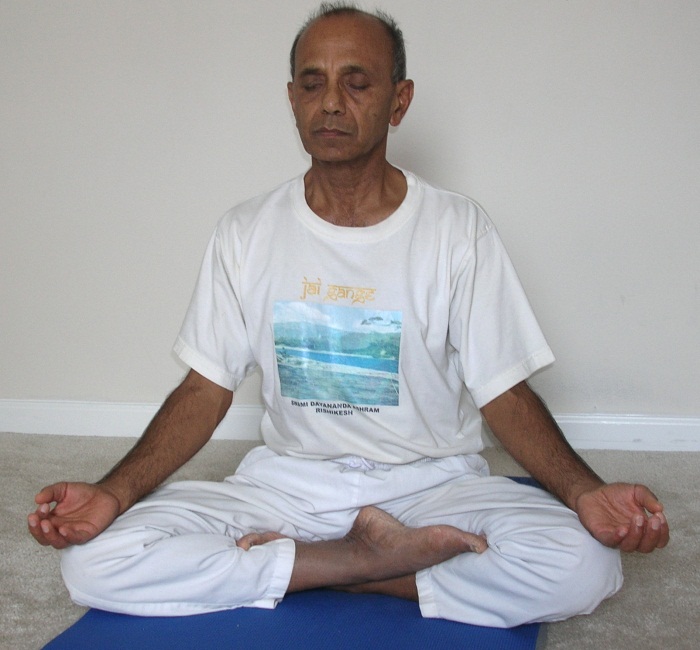
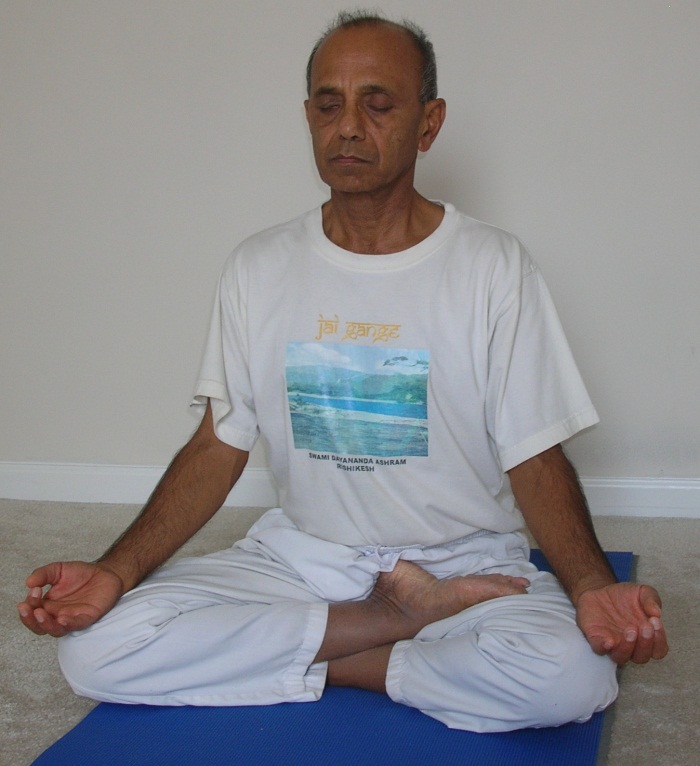
Hi thanks for the video. I find it hard to keep my spine straight when in siddhasana – I find my body falls forward and it takes a big effort to stay straight. Do you have any advice? Thanks
Hello Jack, try sitting on a cushion or a bolster for a few days. See how you feel. Gradually you can begin to try without the cushion. It is a matter of training the body to sit up straight and vertical at the same time keeping the body comfortable.